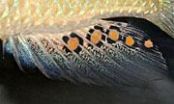(Press-News.org) The risk of having another stroke is higher if patients, after dilation of their blood vessels in the brain, not only receive clot-inhibiting drugs, but also have small tubes called stents inserted. However, studies have provided no hint of a benefit from stenting, which is also referred to with the abbreviation "PTAS". This is the conclusion reached in the rapid report of the German Institute for Quality and Efficiency in Health Care (IQWiG), as published on 9 October 2014.
Stents are supposed to prevent restenosis
Blood vessels in the brain that are narrowed or blocked can cause stroke. If patients have already had a stroke or temporary ischaemia (transient ischaemic attack, TIA), there is a high risk that this occurs again. These patients therefore receive drugs that prevent blood clotting. Another option is to additionally widen the narrowed vessels.
Nowadays this is often done using a small balloon in a procedure known as percutaneous transluminal angioplasty (PTA). But even after PTA and simultaneous blood-thinning medication, vessels often remain narrow (stenosis) or new narrowing occurs (restenosis). The treatment has therefore been expanded to include stenting (percutaneous transluminal angioplasty and stenting, PTAS): Small wire mesh tubes are inserted to support the widened blood vessels and prevent restenosis. This stenting has been available for approximately 10 years.
Compare PTAS with treatment alternatives
The Federal Joint Committee (G-BA) had commissioned IQWiG to assess the benefit of PTAS for patients with symptoms of narrowed blood vessels in the brain (symptomatic intracranial stenosis). PTAS was to be compared with drug treatment with blood-thinning medications alone and with balloon dilatation without stenting (PTA). Like PTAS, PTA always involves administration of blood-thinning drugs.
Four studies identified
IQWiG identified a total of four randomized controlled trials (RCTs) that included patients with symptomatic intracranial stenosis. In three studies, PTAS was compared with drug treatment alone. One study tested PTAS versus PTA.
One relevant study on PTAS versus medication alone
The SAMMPRIS study was relevant for the assessment of PTAS in comparison with drug treatment alone. SAMMPRIS included a total of 451 participants and is the largest study currently available. It is also the only study to provide data both on mortality and side effects and on stroke in all areas of the brain.
The two other studies (Miao 2012 and Gao 2013) only reported strokes that occurred in the territory of the treated vessels. However, it is relevant for the patients whether strokes occur at all – irrespective of their localization. Hence only data from the SAMMPRIS study were available for the outcome "stroke" as well.
Lack of data for important outcomes
Besides mortality (all-cause mortality and from stroke), the burden of disease in the form of stroke, TIA, and other physical or psychological impairments from ischaemia, the patient-relevant outcomes of this assessment also include side effects (e.g. bleeding events or myocardial infarction) and dependence on others or requiring care. However, these were not fully reported in any of the studies. None of the four studies provided results on further criteria that are important for patients such as health-related quality of life, hospitalization or physical endurance.
Considerably more strokes in temporal proximity to the intervention
As the SAMMPRIS data showed, a new stroke is considerably more common in patients who have received an intracranial stent than in patients who only received medication: This was the case in 59 participants (26.3%) in the PTAS group, and in only 42 participants (18.5%) in the comparator group.
Differentiated by type of stroke, these differences can be determined in haemorrhagic stroke, i.e. stroke caused by bleeding, but not in ischaemic stroke, which is caused by narrowing. The haemorrhagic strokes were often periprocedural events occurring within 30 days of the intervention. In many cases, these strokes were apparently caused by mechanical manipulation during the placement of the stent.
No differences in morbidity and revascularization
These disadvantages are not accompanied by advantages in other outcomes: There was no relevant difference between the treatment groups in mortality (all-cause mortality and cerebrovascular mortality). The IQWiG report came to the same conclusion with regard to repeated revascularization, i.e. the necessity to widen narrowed vessels again.
Results potentially biased
All the studies included by IQWiG were subject to uncertainty and their results might be biased. The main reasons were unclear issues regarding randomization and the premature unplanned termination of the studies.
This is also true for SAMMPRIS, which started in November 2008, but was ended prematurely in April 2011 because considerably more events (counting deaths and strokes) had occurred in the PTAS group. Even though this decision is comprehensible, the results can be biased because of the premature termination of the study.
Despite the uncertainty described, IQWiG overall considers there to be a hint of harm from PTAS in comparison with drug treatment alone.
Drugs were not used in compliance with their approval
The interpretation of the SAMMPRIS results was made more difficult because the drugs were not used according to the specifications in the Summary of Product Characteristics valid in Germany: The patients in both groups received a combination of two clot-inhibiting drugs, acetylsalicylic acid (ASA) and clopidogrel (dual antiplatelet therapy). This combination is used in Germany, but is not approved for stroke because it is known to increase the risk of bleeding. It can also not be excluded that there is an interaction between the drugs and stent placement (PTAS), which particularly might influence the occurrence of bleeding.
RCTs indispensable in medical devices as well
PTAS is another example that high-quality studies are needed for risk class III medical devices, which also include stents: In the United States, intracranial stents had at first been approved for treatment of a specific, relatively small group of fewer than 4000 patients affected. This approval was based on case series and on the Humanitarian Device Exemption. However, Medicare, an American health insurance for elderly and disabled people, then demanded an RCT as prerequisite for its reimbursement of stents.
So the SAMMPRIS study, funded by the National Institutes of Health, was initiated. Only this RCT, i.e. a study with a higher level of evidence, revealed that more strokes occurred under the new, allegedly innovative Treatment.
Product safety is not the same as patient safety
This confirmed the conclusion already drawn in the case of antibody-coated stents inserted in coronary vessels: Not only the medical device is decisive, but also its manner of application. "The entire application including its accompanying factors has to be investigated, and not only the stents themselves, to obtain reliable knowledge about the benefit stents have for patients", concludes Stefan Sauerland, Head of the IQWiG Department of Non-Drug Interventions.
Process of report production
The Federal Joint Committee (G-BA) commissioned IQWiG on 28 February 2014 to prepare the report in an accelerated process, known as a "rapid report". Unlike the normal procedure, no preliminary reports are published in this case. Although a draft version of the report is reviewed by external experts, no hearing at which all interested parties can comment takes place. The report (version 1.0) was sent to the commissioning agency on 11 September.
INFORMATION:
An overview of the background, methods and further results of the report is provided in the following executive summary.
Intracranial stents: More strokes than with drug treatment alone
This is probably caused by mechanical manipulation during stent implantation/ no advantages of PTAS regarding other outcomes
2014-10-09
ELSE PRESS RELEASES FROM THIS DATE:
Nanoparticle research could enhance drug delivery through skin
2014-10-09
Scientists at the University of Southampton have identified key characteristics that enhance a nanoparticle's ability to penetrate skin, in a milestone study which could have major implications for the delivery of drugs.
Nanoparticles are up to 100,000 times smaller than the thickness of a human hair and drugs delivered using them as a platform, can be more concentrated, targeted and efficient than those delivered through traditional means.
Although previous studies have shown that nanoparticles interact with the skin, conditions in these experiments have not been sufficiently ...
Greek Bronze Age ended 100 years earlier than thought, new evidence suggests
2014-10-09
Conventional estimates for the collapse of the Aegean civilization may be incorrect by up to a century, according to new radiocarbon analyses.
While historical chronologies traditionally place the end of the Greek Bronze Age at around 1025 BCE, this latest research suggests a date 70 to 100 years earlier.
Archaeologists from the University of Birmingham selected 60 samples of animal bones, plant remains and building timbers, excavated at Assiros in northern Greece, to be radiocarbon dated and correlated with 95.4% accuracy using Bayesian statistical methodology at the ...
Coastal living boosts physical activity
2014-10-09
VIDEO:
Learn more about our research into the coast and how it can boost health and wellbeing.
Click here for more information.
People who live close to the coast are more likely to meet physical activity guidelines than inland dwellers, finds a new study released today.
The research involved participants from across England and describes a particularly noticeable effect on western – but unexpectedly not eastern – coasts of the nation.
Publishing their findings ...
Mining big data yields Alzheimer's discovery
2014-10-09
Scientists at The University of Manchester have used a new way of working to identify a new gene linked to neurodegenerative diseases such as Alzheimer's. The discovery fills in another piece of the jigsaw when it comes to identifying people most at risk of developing the condition.
Researcher David Ashbrook and colleagues from the UK and USA used two of the world's largest collections of scientific data to compare the genes in mice and humans. Using brain scans from the ENIGMA Consortium and genetic information from The Mouse Brain Library, he was able to identify a ...
Dark matter half what we thought, say scientists
2014-10-09
A new measurement of dark matter in the Milky Way has revealed there is half as much of the mysterious substance as previously thought.
Australian astronomers used a method developed almost 100 years ago to discover that the weight of dark matter in our own galaxy is 800 000 000 000 (or 8 x 1011) times the mass of the Sun.
They probed the edge of the Milky Way, looking closely, for the first time, at the fringes of the galaxy about 5 million billion kilometres from Earth.
Astrophysicist Dr Prajwal Kafle, from The University of Western Australia node of the International ...
UPMC investigation into GI scope-related infections changes national guidelines
2014-10-09
PITTSBURGH, Oct. 9, 2014 – National guidelines for the cleaning of certain gastrointestinal (GI) scopes are likely to be updated due to findings from UPMC's infection prevention team.
The research and updated disinfection technique will be shared Saturday in Philadelphia at ID Week 2014, an annual meeting of health professionals in infectious disease fields.
"Patient safety is our top priority," said senior author Carlene Muto, M.D., M.S., director of infection prevention at UPMC Presbyterian Hospital. "We are confident that the change from disinfection to sterilization ...
UPMC programs to improve hand hygiene reduced infections, increased compliance
2014-10-09
PITTSBURGH, Oct. 9, 2014 – UPMC Presbyterian Hospital's infection prevention teams have improved hand washing and sanitizing compliance at the hospital to nearly 100 percent among clinical staff through accountability and educational measures. In a separate effort at UPMC Mercy Hospital, rates of a deadly infection were reduced by educating patients about hand hygiene.
The successful techniques will be reported Saturday in presentations in Philadelphia at ID Week 2014, an annual meeting of health professionals in infectious disease fields.
"Hand hygiene compliance ...
Discovery may lead to lower doses of chemotherapy
2014-10-09
No matter what type of chemotherapy you attack a tumor with, many cancer cells resort to the same survival tactic: They start eating themselves.
Scientists at Brigham Young University discovered the two proteins that pair up and switch on this process – known as autophagy.
"This gives us a therapeutic avenue to target autophagy in tumors," said Josh Andersen, a BYU chemistry professor. "The idea would be to make tumors more chemo-sensitive. You could target these proteins and the mechanism of this switch to block autophagy, which would allow for lower doses of ...
The cichlids' egg-spots: How evolution creates new characteristics
2014-10-09
The evolution of new traits with novel functions has always posed a challenge to evolutionary biology. Studying the color markings of cichlid fish, Swiss scientists were now able to show what triggered these evolutionary innovations, namely: a mobile genetic element in the regulatory region of a color gene. Their results have been published in the latest issue of the renowned scientific journal Nature Communications.
Biological evolution is in general based on the progressive adaption of traits through natural or sexual selection. However, ever so often, complex traits ...
Understanding the bushmeat market: Why do people risk infection from bat meat?
2014-10-09
Ebola, as with many emerging infections, is likely to have arisen due to man's interaction with wild animals – most likely the practice of hunting and eating wild meat known as 'bushmeat'. A team of researchers led by the University of Cambridge and the Zoological Society of London (ZSL) has surveyed almost six hundred people across southern Ghana to find out what drives consumption of bat bushmeat – and how people perceive the risks associated with the practice.
The Straw-Coloured Fruit Bat, Eidolon helvum, is widely hunted and eaten in Ghana, but carries ...
LAST 30 PRESS RELEASES:
Nanoplastics have diet-dependent impacts on digestive system health
Brain neuron death occurs throughout life and increases with age, a natural human protein drug may halt neuron death in Alzheimer’s disease
SPIE and CLP announce the recipients of the 2025 Advanced Photonics Young Innovator Award
Lessons from the Caldor Fire’s Christmas Valley ‘Miracle’
Ant societies rose by trading individual protection for collective power
Research reveals how ancient viral DNA shapes early embryonic development
A molecular gatekeeper that controls protein synthesis
New ‘cloaking device’ concept to shield sensitive tech from magnetic fields
Researchers show impact of mountain building and climate change on alpine biodiversity
Study models the transition from Neanderthals to modern humans in Europe
University of Phoenix College of Doctoral Studies releases white paper on AI-driven skilling to reduce burnout and restore worker autonomy
AIs fail at the game of visual “telephone”
The levers for a sustainable food system
Potential changes in US homelessness by ending federal support for housing first programs
Vulnerability of large language models to prompt injection when providing medical advice
Researchers develop new system for high-energy-density, long-life, multi-electron transfer bromine-based flow batteries
Ending federal support for housing first programs could increase U.S. homelessness by 5% in one year, new JAMA study finds
New research uncovers molecular ‘safety switch’ shielding cancers from immune attack
Bacteria resisting viral infection can still sink carbon to ocean floor
Younger biological age may increase depression risk in older women during COVID-19
Bharat Innovates 2026 National Basecamp Showcases India’s Most Promising Deep-Tech Ventures
Here’s what determines whether your income level rises or falls
SCIE indexation achievement: Celebrate with Space: Science & Technology
Children’s Hospital Colorado performs region’s first pediatric heart and liver dual organ transplant
Australian team discover why quantum computers have memory problems over time
What determines the fate of a T cell?
Candida auris: genetic process revealed which could be treatment target for deadly fungal disease
Groundbreaking discovery turns household plastic recycling into anti-cancer medication
Blocking a key inflammatory pathway improves liver structure and vascular function in cirrhosis, study finds
Continuous spread: Raccoon roundworm detected in nine European countries
[Press-News.org] Intracranial stents: More strokes than with drug treatment aloneThis is probably caused by mechanical manipulation during stent implantation/ no advantages of PTAS regarding other outcomes


